#Len Universal Collision
Text
Next chapter team (VS)
One of the newer assists deploys a SPECIAL ZONE
I wonder who deploys it…
Do know that UNIVERSAL COLLISION: ALL STARS (not a real project) and D4DJ (real project) (alongside with others) are NOT RELATED TO EACH OTHER despite both using D4DJ DJ Unit icons

#universal collision#CarlosYT#Mistrare#Heidi#Michiru Kaibara#Kaito Universal Collision#Renri Another Eden#Len Universal Collision#arisa ichigaya#Yoshino Kariya#Mana Kase#Kyoko Yamate#Volk#kaoru seta
0 notes
Text
You've got to be kidding! The fifth installment which is the worst






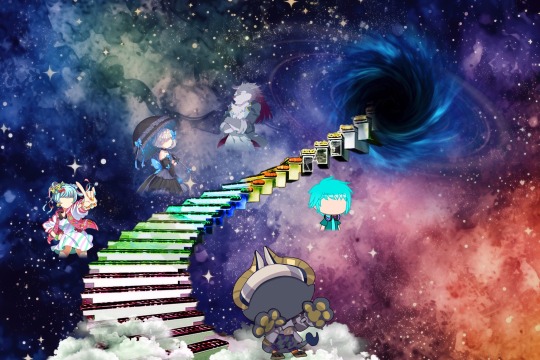
2 Steps left! Great work Yuka. You just need one more soul.
But a friendly reminder: You'll find endless despair in there.
Part 4 | Final Installment
#universal collision#Love Live#another eden#CarlosYT#AprilYT#Universal Collision Len#Another Eden Renri#dia kurosawa#D4DJ#yuka jennifer sasago#You've got to be kidding!
0 notes
Photo



First research flight images from innovative balloon-borne telescope Astronomers have successfully launched a balloon-borne telescope which has begun capturing images of the Universe on its first research flight. The super pressure balloon-borne Imaging Telescope (SuperBIT) was flown to the edge of space by a helium-filled NASA scientific balloon the size of a football stadium where it will help researchers investigate the mystery of dark matter. SuperBIT has already taken its first images on this flight, showing the "Tarantula Nebula” - a neighbourhood of the Large Magellanic Cloud where new stars are being born, and the collision between the “Antennae galaxies” NGC 4038 and NGC 4039. SuperBIT is a collaboration between Durham University, UK, the University of Toronto, Canada, Princeton University, USA, and NASA. It launched from Wānaka, New Zealand (Aotearoa) earlier this week, following a two-year delay due to the Covid pandemic. Carried by seasonally stable winds for about three months, it will circumnavigate the southern hemisphere several times - imaging the sky all night, then using solar panels to recharge its batteries during the day. SuperBIT flies at 33.5km altitude, above 99.5 per cent of the Earth’s atmosphere. It takes high-resolution images like those of the Hubble Space Telescope, but with a wider field of view. The science goal for this first flight is to measure the properties of dark matter, a heavy but invisible type of material. Dark matter is all around us but poorly understood. SuperBIT will test whether dark matter particles can bounce off each other, by mapping the dark matter around clusters of galaxies that are colliding with neighbouring galaxy clusters. Various theories about dark matter suggest that, during a collision, some dark matter might either slow down, spread out, or get chipped off. The researchers say that if they can map dark matter leaving the collision, they could finally start to learn what it is made of. Professor Richard Massey, of Durham University’s Department of Physics, said: “It takes the gravity from an entire galaxy to move dark matter and SuperBIT will look at clusters of galaxies that happen to be colliding with each other. “Essentially, we’re using the largest particle accelerators in the Universe, to smash lumps of dark matter and see where the bits fly. “If dark matter goes ‘crunch’, or if bits are chipped off, we could finally start to learn what it’s made of.” Although dark matter is invisible, SuperBIT will map where it is by the way it bends passing rays of light, a technique known as gravitational lensing. While telescopes on the ground have to squint through the Earth’s atmosphere – meaning their view can become blurred - space-based telescopes get a clear view of the light that has travelled billions of years from the distant universe. SuperBIT is the first ever balloon-borne telescope capable of taking wide-field images with resolution limited only by the laws of optics. During its final test flight in 2019, SuperBIT demonstrated extraordinary pointing stability, with variation of less than one thirty-six thousandth of a degree for more than an hour. SuperBIT cost about $5million/£4.1million, almost 1,000 times less than an equivalent satellite. Not only is helium cheaper than rocket fuel, but the ability of SuperBIT to return to Earth via parachute meant the team could tweak its design over several test flights. Reusable spacecraft can also be reconfigured and upgraded. For example, the development team buy a new camera shortly before each launch, because modern detectors are improving so rapidly. Using cutting-edge technology has kept SuperBIT young. The team already has funding to upgrade SuperBIT’s 0.5 metre aperture telescope to 1.6 metres, which would boost light gathering power tenfold, with a wider-angle lens and more megapixels. The relatively cheap cost may even make it possible for a fleet of space telescopes to offer time to astronomers around the world. TOP IMAGE....A false-colour image taken by the SuperBIT telescope soon after launch in visible and ultra-violet light of the "Tarantula Nebula” - a neighbourhood of the Large Magellanic Cloud where new stars are being born. CREDIT SuperBIT CENTRE IMAGE....A false-colour image taken by the SuperBIT telescope soon after launch in visible and ultra-violet light of a pair of galaxies smashing into each other. As they collide, the “Antennae galaxies” NGC 4038 and NGC 4039 are ripping strips off each other and opening themselves for inspection. CREDIT SuperBIT LOWER IMAGE....The SuperBIT telescope nestled among its solar panels and communications antennae. Picked up at dawn, ready to be carried to the launch pad beside the runway at Wānaka airport. CREDIT Richard Massey.
70 notes
·
View notes
Photo
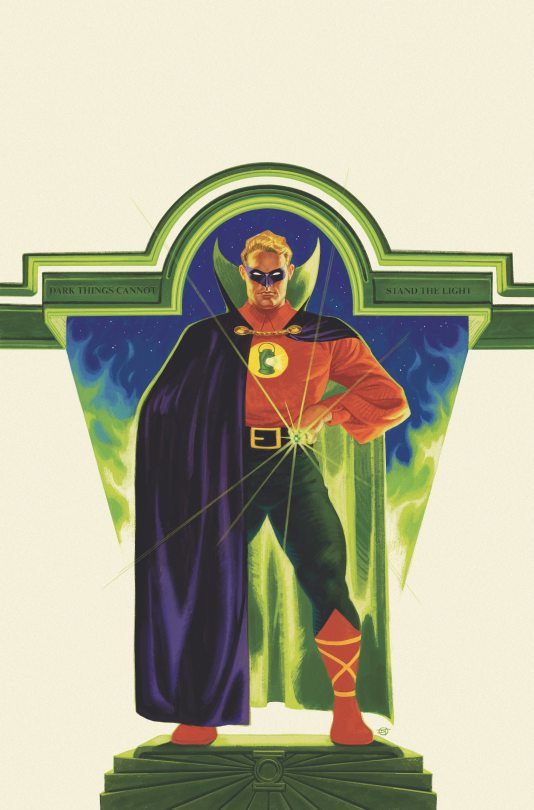
Alan Scott: The Green Lantern (2023) Six-Issue Mini-Series Announced!
“It’s long past time that the heroes of the Justice Society had their own titles again,” said Geoff Johns. “At the same time, they had to be special, important, and emotional stories, each one exploring character, revealing secrets, and introducing new heroes and villains to the DC Universe.”
Alan Scott: The Green Lantern by Tim Sheridan (Flashpoint Beyond) and Cian Tormey (Superman: Son of Kal-El) will be Alan Scott’s first solo title since 1949. Through a twist in the timeline, Alan Scott: The Green Lantern revisits and recontextualizes the origins of the first Green Lantern through the lens of our modern understanding of the man. The story, which begins in the 1930s, is about an old flame – the kind that burns eternal – and the sometimes head-on, single-track collision of our personal and professional lives. This is Alan’s coming-of-age, in which he must embrace the man he is, to become the hero he’s meant to be. In the end, he’ll have gained a greater understanding of himself and his gifts – as he unlocks a new, previously unknown ability that could make him the most powerful Green Lantern in existence!
“Tim has crafted a beautiful and shocking origin story for Alan’s greatest enemy, the Golden Age Red Lantern, that is both heartbreaking and inspiring,” added Johns.
#alan scott: the green lantern#alan scott: the green lantern 2023#alan scott#green lantern#jsa#justice society of america#justice society#red lantern#vladimir sokov#tim sheridan#cian tormey#dc#dc comics#dc news#lgbtincomics#dcedit#comicedit#comicsedit#u can reblog#I'M HYPERVENTILATING IM EXPLODING IM SOBBING
57 notes
·
View notes
Text

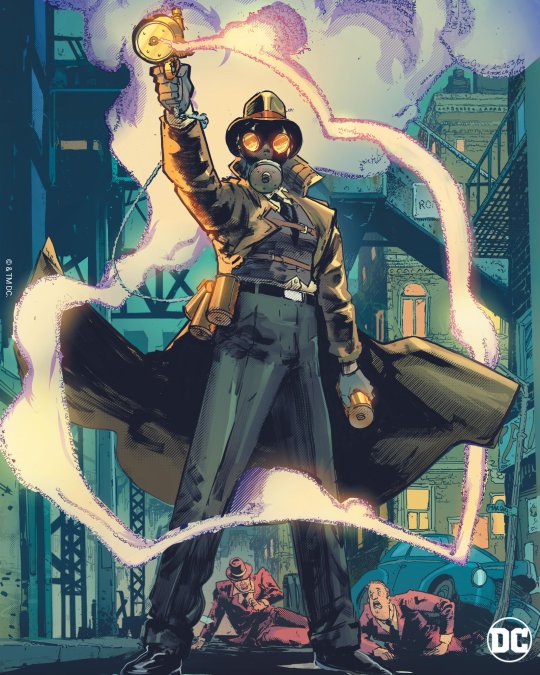
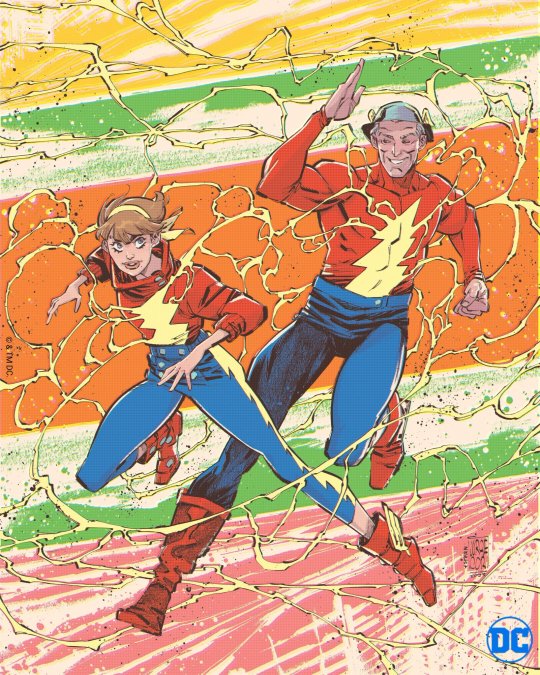
Three all-star creative teams will be bringing Golden Age characters Alan Scott, Wesley Dodds, and Jay Garrick to life in three brand new mini-series!
—Alan Scott: The Green Lantern by Tim Sheridan and Cian Tormey will be Alan Scott’s first solo title since 1949. Through a twist in the timeline, Alan Scott: The Green Lantern revisits and recontextualizes the origins of the first Green Lantern through the lens of our modern understanding of the man. The story, which begins in the 1930s, is about an old flame – the kind that burns eternal – and the sometimes head-on, single-track collision of our personal and professional lives. This is Alan’s coming-of-age, in which he must embrace the man he is, to become the hero he’s meant to be. In the end, he’ll have gained a greater understanding of himself and his gifts – as he unlocks a new, previously unknown ability that could make him the most powerful Green Lantern in existence!
“Tim has crafted a beautiful and shocking origin story for Alan’s greatest enemy, the Golden Age Red Lantern, that is both heartbreaking and inspiring,” added Johns. “Jeremy has created a fun, emotional adventure celebrating the reunion of Jay Garrick with his long lost daughter, Judy, set firmly in the DC Universe of today and Rob will present a mystery tale of The Golden Age Sandman’s earliest days through the lens of Oppenheimer. These three series will all tie back into Justice Society of America and a few other titles we’ve got brewing.”
—Wesley Dodds: The Sandman by Rob Venditti and Riley Rossmo shows the titular character as a pacifist. He has given up on the hope of a peaceful world, but he hasn’t stopped believing that people can be better to each other, if they’re only given the right tools. Possessing a scientist’s optimism and romanticism, he is convinced that humanity can invent cures for its own ills. Having learned about the battlefield horrors of World War I from his father, he sought to create a sleep gas that would allow for “humane” warfare. During his research, he recorded all of his attempts in his science journal - even those with horribly deadly consequences - swearing to never show them to the world. Now his journal has been stolen, and he must find the culprit and stop them before his deadly mis-inventions fall into the arsenals of the belligerent nations threatening to pull the United States into the next world war.
—Jay Garrick: The Flash by Jeremy Adams and Diego Olortegui. It’s hard being a parent, especially when your kid is a speedster! Jay Garrick has been reunited with his long lost daughter, Judy, but figuring out how to connect with her is proving to be difficult. They’ll need to work to find common ground when a mission that started in Jay’s early days as the Flash comes roaring to today. But will The Flash and The Boom be able to thwart a plan that’s been in the works for decades?!
All three of the first issues will be available in October at local comic book shops.
#dc comics#jsa#Justice Society of America#green lantern#alan scott#the sandman#wesley dodds#the flash#jay garrick#judy garrick#art#news
29 notes
·
View notes
Text
The Art of Capturing Meteorites’ Mineral Mosaics
Neil Buckland uses a DIY microscopic camera system to create monolithic images that reveal the tiny elemental details of extraterrestrial rocks.
— By Ramin Skibba | Science | April 17, 2023 | Wired.Com

For meteorites rich in the mineral olivine like this one, Buckland's photographs bring out greens, oranges, and blues. Photograph By Neil Buckland
When Neil Buckland, an artist based in Seattle, met a geologist named Tony Irving a few years ago, he had no idea it would launch an extraterrestrial collaboration. Buckland was at the University of Washington photographing ultrathin slices of meteorite for a project Irving was working on. The cut space rocks didn’t seem particularly exciting at first. Then Buckland peered at the 30-micron-thick samples through a pair of polarizing filters. He was stunned by the vibrant collage of hues.

Found by hunters in Algeria after a fireball event in 2013, this meteorite displays the blues and greens of pyroxene, a mineral typically found in volcanic areas. Photograph By Neil Buckland

Meteorites typically have distinct compositions that let researchers attribute them to particular impact events. This rock, determined to originate on Mars, fell on India in 1865. Photograph By Neil Buckland

The grays and whites indicate this meteorite is high in calcium. It’s most likely a shard of the moon broken off by an asteroid eons ago. Photograph By Neil Buckland

Some meteorites, such as this one found in Morocco, show signs of their fall and impact on Earth. The outer layer melts while hurtling through the atmosphere, then solidifies to glass. Photograph By Neil Buckland
Inspired by the photographic possibilities, Buckland went back to his studio and got to work designing a camera system built around a microscope lens attached to a Pentax DSLR. To create his images, he captures a 2-millimeter-square section of a sample at up to 40,000X magnification, then moves the camera slightly and shoots another square. After capturing 300 to 400 of those, he stitches them all together into a photo that can be displayed at up to 12 feet wide. “It’s like a cosmos in a pebble,” Buckland says. “From an artistic standpoint, I try to show the images as big as I do and as detailed as they are to create that existential shift in perspective.”
The polarized light can reveal different minerals within the samples. If a meteorite is rich in olivine, like the one at the top of this article, the light brings out greens, oranges, and blues. For scientists, the configuration of minerals can hold clues to a meteorite’s origins, such as whether it came from an asteroid collision a billion years ago or was ejected from a massive impact on another world with a particular mixture of atmospheric gases. They’re also great to look at if you just want to space out.
4 notes
·
View notes
Text
Will Success Spoil Rock Hunter? (1957)

SNL really have to up their fake commercial game. The opening credits of this advertising satire present a cavalcade of malfunctioning and potentially even lethal products designed for the average consumer, all presented with a plastered-on grin and eager tone. Who are you going to believe, your lying eyes or the person paid to make something sound good? The world of advertising is a topsy turvy one headed by incompetent fools who put the squeeze on overworked creatives below them. The things a man wouldn’t do for that ultimate symbol of corporate success: a key to the executive powder room. When happenstance and a niece he dotes on a liiiiittle too much put Rock Hunter on collision course with Rita Marlowe and her oh-so-kissable lips, all of that and more is within grasp. But little does he know that this will become something of a Faustian pact, driving a wedge between the man and those he loves as he blindly pursues his conception of success. The Hollywood publicity machine is just as unrelenting as that of Madison Avenue ad firms, and these two make an almost literal marriage of convenience out of this. Lies and deceit sold to an adoring crowd. But the film sells it with a cheery facade, layering in little hints of light slapstick as Rock flees the adoring masses or tries to leave his handprints on a Walk of Fame. Doing too many push-ups can stiffen your muscles and cause a sort of rigor, and the executive washroom emits an angelic choir. It’s all insanity, so why take any of it seriously?
A metatextual vein runs through the film as well as its within-universe commentary on advertising. Opening with Tony Randall playing the 20th Century Fox fanfare as a one-man band before introducing the film. He drops by midway through to condescend the newfangled television crowd, commenting on how crystal clear and true to life the new medium is even as the image shrinks and becomes staticky and distorted. Marlowe’s frumpy secretary is played by Joan Blondell, who was a sex symbol in the Pre-Code years before this new bird-noises making Marilyn Monroe type filled the headlines. Acutely self aware, this is the monkeys running the circus and all Rock can do is just stare down the barrel of the lens and shrug wryly.
THE RULES
SIP
Someone names Rock’s advertising firm.
A brand is named.
Rita makes bird noises.
BIG DRINK
A famous person gets name-dropped.
Someone covers the television speaker.
#drinking games#will success spoil rock hunter#frank tashlin#jayne mansfield#tony randall#betsy drake#joan blondell#comedy#satire
2 notes
·
View notes
Text

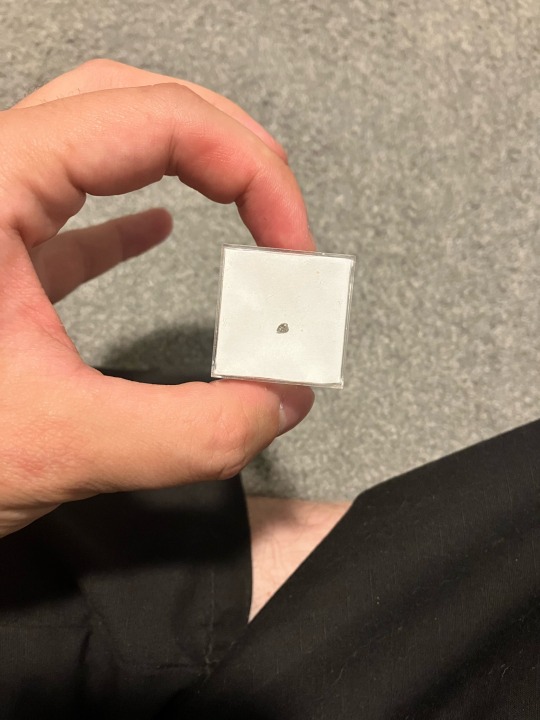
Tellurium
Here’s something SUPER RARE for you all.
Left photo taken with a macro lens. Right photo taken with regular lens. I have a magnification box on the way for this specimen for ease of viewing.
Tellurium is a brittle, mildly toxic rare metalloid.
On earth it’s rarer than Platinum. It’s sometimes referred to as ‘The Forgotten Element’
Tellurium has importance in technological uses such as in solar cells and semiconductors. It also has uses in heavy metal removals.
Due to its often incredibly tiny size Tellurium is also being investigated in the nanomedicine field and has shown promising applications as an antibacterial, anticancer and imaging agent.
That said the biological role of Tellurium is considered unknown though fungi have on occassion used Tellurium in place of Sulphur and Selenium in amino acids.
Wen molten Tellurium will corrode copper, iron and stainless steel.
Tellurium also has the highest melting and boiling point of all the oxygen family elements of which it is a part.
Tellurium has 8 different isotopes with two of these isotopes (Te128 and Te130) being slightly radioactive and possessing the longest known half life of all radionuclides, about 160 TRILLION times the age of the known universe.
Tellurium is considered the rarest of the solid stable elements occuring at only around 1 µg/kg in the earth’s crust.
The rarity of Tellurium on earth however does not reflect its rarity in the universe.
In the cosmos Tellurium is more abundant that Rubidium whereas in the earth’s crust Rubidium is at least 10,000 times more abundant than Tellurium.
The theory is that the abundance of Tellurium in earth was depleted by conditions during the preaccretional in the solar nebula wherein certain elements that form volatile hydrides such as Tellurium were severely depleted by the evaporation of those hydrides.
Tellurium is mostly found as gold tellerides such as Calaverite, Krennerite, Petzite and Sylvanite.
Native Tellurium such as the specimen about is much much rarer.
Just last year in 2023 astronomers detected the creation of tellurium in the universe during the collision of two neutron stars.
0 notes
Text
Celestial Campfires: Stories from Stargazing Nights
Introduction: In the vast expanse of the night sky, a celestial campfire awaits those who dare to look up. Stargazing nights offer a unique opportunity to connect with the cosmos, where stars become storytellers and constellations unveil tales of ancient myths. Join us as we explore the enchanting world of celestial campfires and the captivating stories they share.
The Cosmic Canvas: The night sky serves as a canvas painted with the twinkling lights of distant stars. As we gather around the celestial campfire, the canvas comes alive with constellations that have inspired humanity for centuries. From Orion's majestic belt to the mythical figures of Greek lore, each star cluster tells a story written across the cosmos.
Meteor Showers: Celestial Fireworks: Meteor showers, the celestial fireworks of the night sky, add a dynamic and awe-inspiring element to our stargazing experience. As streaks of light blaze across the canvas, these shooting stars become messengers from the depths of space, carrying with them tales of cosmic collisions and the birth of new celestial wonders.
Planetary Tales: Our celestial campfire wouldn't be complete without the presence of planets, the celestial wanderers that have fascinated astronomers throughout history. From the breathtaking rings of Saturn to the mysterious storms of Jupiter, each planet holds its own chapter in the cosmic chronicle.
Galactic Ghost Stories: As we peer into the depths of the Milky Way, we encounter galactic ghost stories – remnants of ancient stars, nebulae, and other celestial phenomena. These ethereal tales remind us of the constant dance of creation and destruction unfolding in the vastness of our galaxy.
Moonlit Narratives: The moon, Earth's celestial companion, graces our stargazing nights with its ever-changing phases. From the soft glow of a crescent moon to the brilliance of a full moon, each lunar phase weaves its own narrative, influencing tides, cultures, and the very fabric of our nightscape.
Telescopic Time Travel: A telescope becomes our portal to distant realms, allowing us to peer into the past and glimpse the light of stars that may have long since burned out. As we explore the universe through this lens, we become time travelers, unraveling the stories of ancient starlight that has traveled across the cosmos to reach our eyes.
Conclusion: Celestial campfires offer a timeless sanctuary for those who seek connection with the cosmos. Each stargazing night becomes a journey into the heart of the universe, where stories written in starlight unfold with every gaze skyward. As we gather around our celestial campfire, let us embrace the wonder of the night sky and the countless stories it holds, waiting to be discovered by those who dare to look up.
0 notes
Text
my head is cavernous and echoing with a mix of the very cat I burst verses of contemporary pop by artists I confuse with each other and thin strands of life on mars and untouchable face, I feel like I should feel like I’m swimming against the tide but it’s more like floating in a huge liminal room where they forgot to program collision correctly. Floating up into the fizzy lifting industrial fans. I’m wrapped up in such silly things, even my lens on loss and pain is feeling shame and regret for not spending the time, making the contact- universal, understandable- specifically that I didn’t get to a thank you card I owed- cringe what why are you making it about you in such. A frivolous way?
But hello! Mya-yah-yah with a big tall stretch, so strong! My sweetheart, we try to understand each other. Sometimes I wish I knew why you love to bite the toilet paper so I could tell you, because you he way you look at me while you do it sometimes has me utterly convinced you do not yourself know why you do it. You’re a being made of Id and Mashmallow. Fluff and Will. You’re SO loud when you purr, confidently rumbling with one leg stretched all the way out, pet me like one of your French cats. You invented yourself and it was the best idea, all your ideas are the best idea, and you’re a genius for always doing them immediately. You still drool when you’re really happy, which really —considering both the notoriety of cleanliness across your species as a whole and the specific context that most humans think it is cute to be licked “awww kisses”— I shouldn’t find gross, but I do just a little. But you’re so cute with your paws crossed primly in front of you resting on mine, squinching into the camera I guess. Your name is on the show, I’m just a consistent supporting character.
Herself came into sight and your tail is going while you lean your chin hard into my wrist, trying to be very still and play it cool even as you’re wrapped around my arm like a jaguar on a branch. You have so much heart- if I woke up tomorrow and you were the size of a tiger I wouldn’t be that surprised.
Okay I was looking for a gif of a tiger sleeping on a tree branch but tumblr gave me this and I guess this is my journal entry for today now. At least the loop has moved on to because the night.

#nightposting#yolkcheeks talks#low punctuation#brain dump#the gorls#but mostly her rumbly self#the sassy one#tho tbh her sister has expanded her spicy beyond her belief that dinner should be 90 minutes earlier#so it is decreasingly accurate to imply she is not the sassy one
1 note
·
View note
Text
AprilYT Introductions
Character: Origin: Otherworld
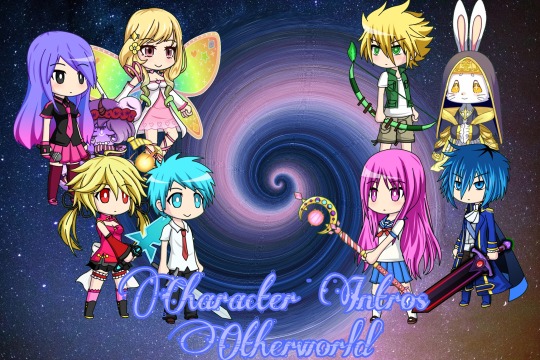

“Brother, why do you look different?”
In his middle school years, this is CarlosYT… or at least a concept version of him. Thanks to Len, he was able to get the sword… although he was a first timer with the Adventurer’s Sword”

“Is that me?!”
This girl is AprilYT, also known as me. I used to be a staff user before my staff became the blooming blade inbetween Main Story and Pre-events. Also was a 6th grader at the time.

“Len, Isn’t this you by this picture?”
As the trained bow user, this is Len… like both AprilYT and CarlosYT, he is a concept version… or we could say from the otherworld for now… He is a 7th grader, like CarlosYT.

“Investigation never e- Renri…?”
This is their timeline’s Renri, not to be confused with ours. Renri happens to be a sword user instead of being an Ax user… odd…

“Time we- No, for House Ramses- No, for House Blue Velvet!”
I believe this is Kaito from their timeline… Huh, I guess this is some part of Kaito I never knew of… wonder what Defstirius was at the time…

“My what a lovely aria- wings?!”
This is their timeline’s Heidi, she recently graduated from school, but my other self thinks that this Chronos has messed up the timeline by some pieces, not sure…
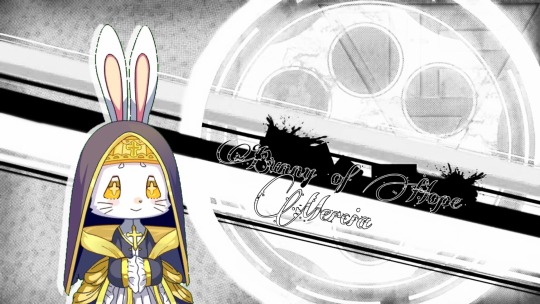
“I barely recognize that bunny!”
This is their timeline’s 7th party member, Mercia. Not affiliated with August or whatever, but I think this is the previous light crystal holder before it was passed to August for his specialty?

“Please pull ticket to reveal next member!”
This is the 8th party member, May, with her pet, Noxia. All I know about them is being an idol before quitting the industry because of a scandal or something… our timeline’s May, I know you’re somewhere out there! We are taking your popularity to higher levels by carrying it with the help of D4DJ!
#universal collision#multifandom#AprilYT Introductions#CarlosYT#AprilYT#Universal Collision Len#Universal Collision Renri#Universal Collision Kaito#Universal Collision Heidi#Universal Collision Mercia#May & Noxia
1 note
·
View note
Text
Hunger games (Season -1 because my season crashed)
Districts 1-3 = World Dreamers
Districts 4-7 = Regular UniChØrd and UC UniChØrd
District 8 = Latest available Universal Collision characters
Districts 9-12 = Random people
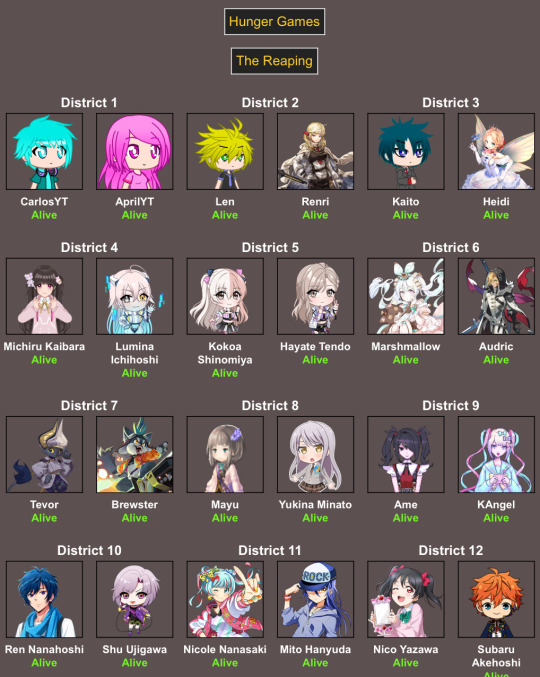
Day Zero starts and people run away or grab items

Audric, that was so uncalled for
KAngel, what did Kokoa do to you???

More people running away + RIP Michiru

Typical Brewster behavior

Day 1 and Karma hits KAngel
Mayu probably got medical supplies from IDA School (maybe)
Kokoa is stalking me which help me
Oh... Hayate is going to become a beast (but again, my season crashed)
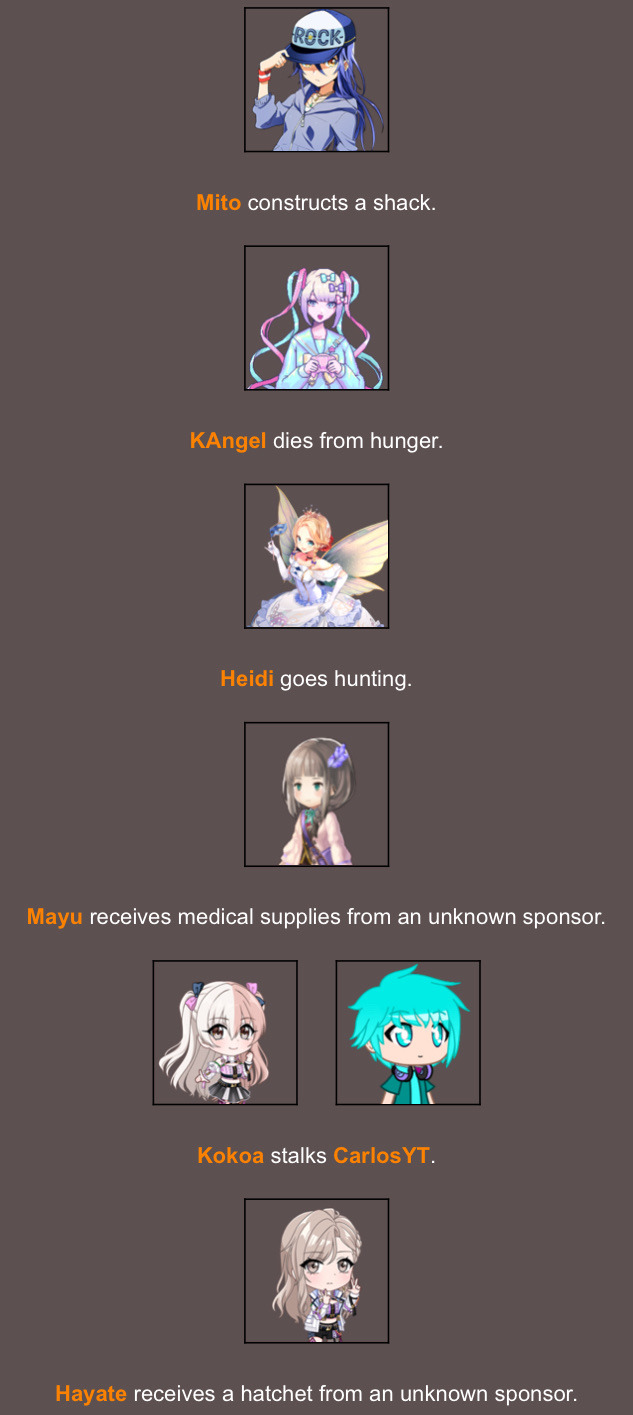
3 people who have weapons hunt others meanwhile there's a literal detective cat
Welp, we heard it: AAside over Enstars
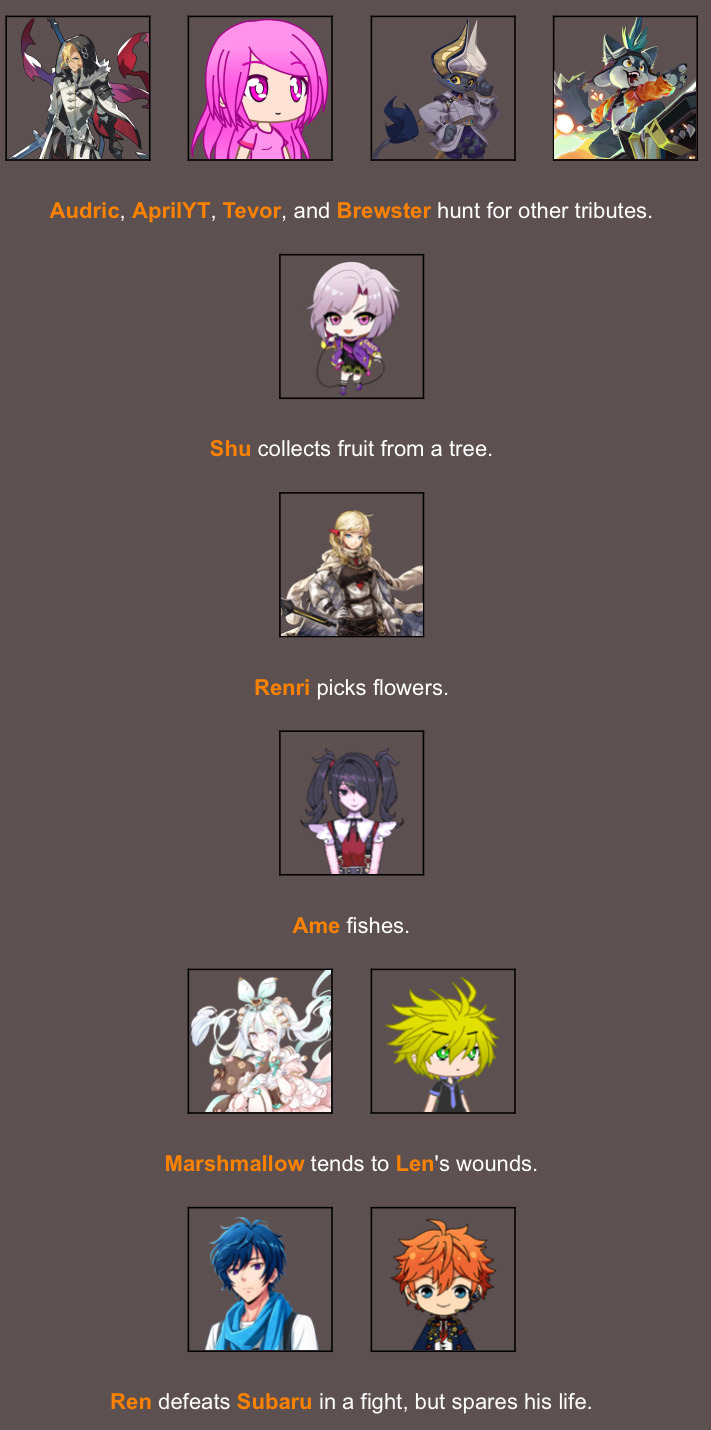
Isn't the Nico event somewhat similar to a card she has in SIF?
Insert Star Wars "I have the high ground" reference here
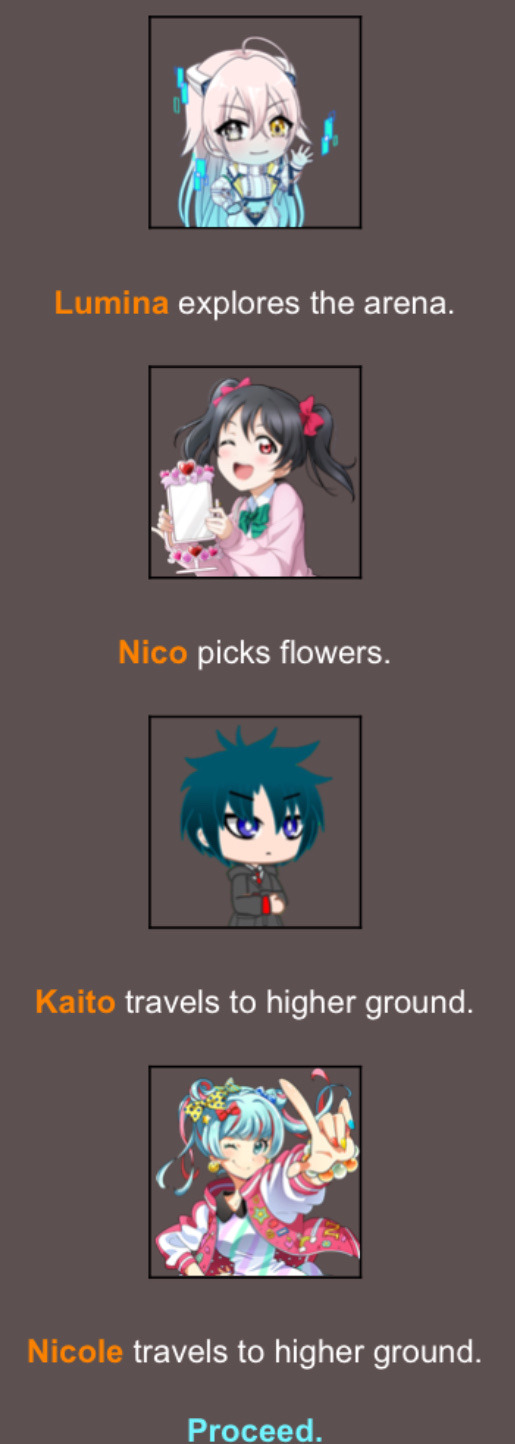
*insert sad piano noises here*
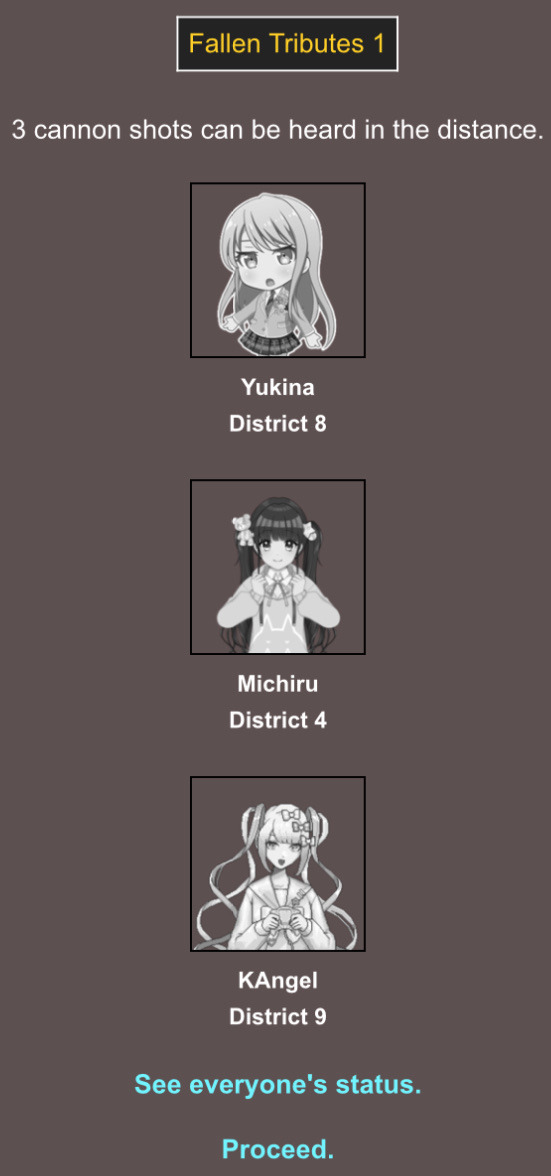
#hunger games simulator#Universal Collision CarlosYT#universal collision aprilyt#Universal Collision Len#Another Eden Renri#Universal Collision Kaito#Game of Dice Heidi#michiru kaibara#lumina ichihoshi#kokoa shinomiya#Hayate Tendo#food fantasy marshmallow#dragalia audric#Dislyte Tevor#Dislyte Brewster#Another Eden Mayu#yukina minato#ame needy streamer overload#kangel#ren nanahoshi#shu ujigawa#Nicole Nanasaki#Mito Hanyuda#Nico Yazawa#subaru akehoshi#Universal Collision#Another Eden#D4DJ#Dragalia Lost#Food Fantasy
1 note
·
View note
Text

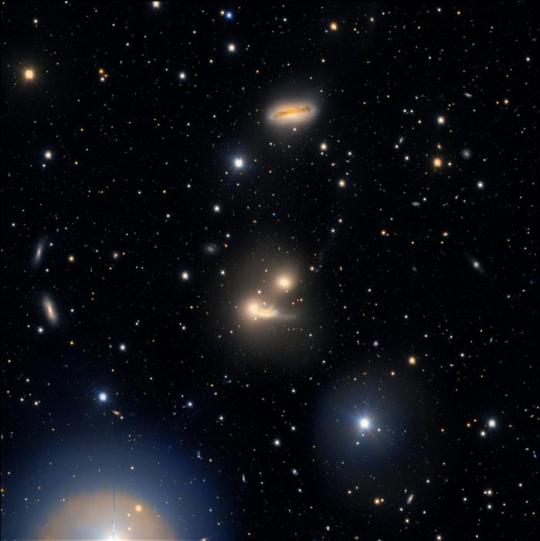
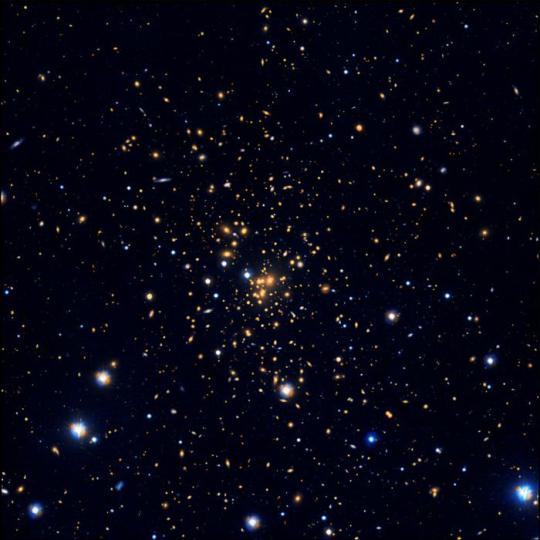
A triumph of galaxies in three new images from the VST
Distant, far away galaxies. Interacting galaxies, whose shape has been forged by the mutual gravitational influence, but also galaxies forming groups and clusters, kept together by gravity. They are the protagonists of three new images released by the VLT Survey Telescope (VST).
VST is an optical telescope with a 2,6 diameter mirror, entirely built in Italy, that has been operating since 2011 at the European Southern Observatory’s (ESO) Paranal Observatory in Chile. Since 2022, the telescope has been fully managed by INAF through the National Coordination Centre for VST, based at the INAF premises in Naples. VST is specialised in observing large areas of the sky thanks to its wide field camera, OmegaCAM, an actual “cosmic wide-angle lens” able to capture, in each shot, one square degree of the sky, a portion of the celestial vault twice as large as the full Moon’s apparent diameter on each side. Besides images for astrophysics research, spanning from stars to galaxies all the way to cosmology, in the past year the telescope has conducted a new programme dedicated to the general public, observing nebulae, galaxies and other iconic objects during some full Moon nights, when the brightness of our natural satellite disturbs the collection of scientific data. More images will be published in the coming months.
“Besides scientific research, one of the goals of the VST Centre is to disseminate scientific knowledge and to share the wonders of the Universe with the general public. We especially wish that young people can discover and nurture their interest in astrophysics through these amazing images”, notes Enrichetta Iodice, INAF researcher in Naples and responsible for the national Coordination Centre for VST.
One of the three new images portrays ESO 510-G13, a curious lenticular galaxy about 150 million light years from us, in the direction of the Hydra constellation. The central bulge of the galaxy stands out. The dark silhouette of the dust disk, seen from the edge, crosses the bulge, obscuring part of the light. The disk’s distorted shape, vaguely resembling an upside-down S, indicates the turbulent past of ESO 510-G13, which may have acquired its current appearance following a collision with another galaxy. In the lower right corner, among the many stars of the Milky Way scattered across the image, a pair of spiral galaxies about 250 million light years from us are also visible. Zooming into the image, many more galaxies appear, even at greater distances, as small spots of light elongated among the many dots in the background.
The second image shows a small group of four galaxies, called Hickson Compact Group 90 (HGC 90), which is about 100 million light years away from Earth, towards the Piscis Austrinus constellation. The two round, bright spots near the image centre are the elliptical galaxies NGC 7173 and NGC 7176. The bright streak that bifurcates and connects these two galaxies is the third member of the group, the spiral galaxy NGC 7174: its curious shape indicates the ongoing interaction between the three celestial bodies, which has stripped their stars and gas, mixing up their distribution. A halo of diffuse light envelops the three galaxies. The fourth galaxy belonging to the group, NGC 7172, visible in the upper part of the image, does not seem to participate in this celestial dance: its core, crossed by dark clouds of dust, hides a supermassive black hole that has been actively devouring the surrounding material. The HGC 90 quartet of galaxies is embedded in a much larger structure, including dozens of galaxies, some of which are visible in this image.
The third image shows a much richer and even more distant grouping of galaxies: the Abell 1689 galaxy cluster, which can be observed in the direction of the Virgo constellation. Abell 1689 contains more than two hundred galaxies, mostly visible as yellow-orange blobs, whose light has travelled for about two billion years before reaching the VST. The enormous mass, including enormous quantities of hot gas and of the mysterious dark matter in addition to the galaxies, deforms space-time in the vicinity of the cluster. Therefore, the cluster acts as a “gravitational lens” on more distant galaxies, amplifying their light and producing distorted images, much like what a magnifying glass does. Some of these galaxies can be spotted as dots and tiny, slightly curved lines, especially around the cluster's central regions.
TOP IMAGE....ESO 510-G13, a curious lenticular galaxy about 150 million light years from us, in the direction of the Hydra constellation. Credit INAF/VST. Acknowledgment: M. Spavone (INAF), R. Calvi (INAF)
CENTRE IMAGE....A small group of four galaxies, called Hickson Compact Group 90 (HGC 90), which is about 100 million light years away from Earth, towards the Piscis Austrinus constellation. Credit INAF/VST/VEGAS, E. Iodice (INAF). Acknowledgment: M. Spavone (INAF), R. Calvi (INAF)
LOWER IMAGE....The Abell 1689 galaxy cluster, which can be observed in the direction of the Virgo constellation. Credit INAF/VST. Acknowledgment: M. Spavone (INAF), R. Calvi (INAF)
3 notes
·
View notes
Link
Check out this listing I just added to my Poshmark closet: Mirror Roadcam 1080P FHD Dash Cam and Rear View Mirror 2-in-1, 4.5" LCD Screen,.
0 notes